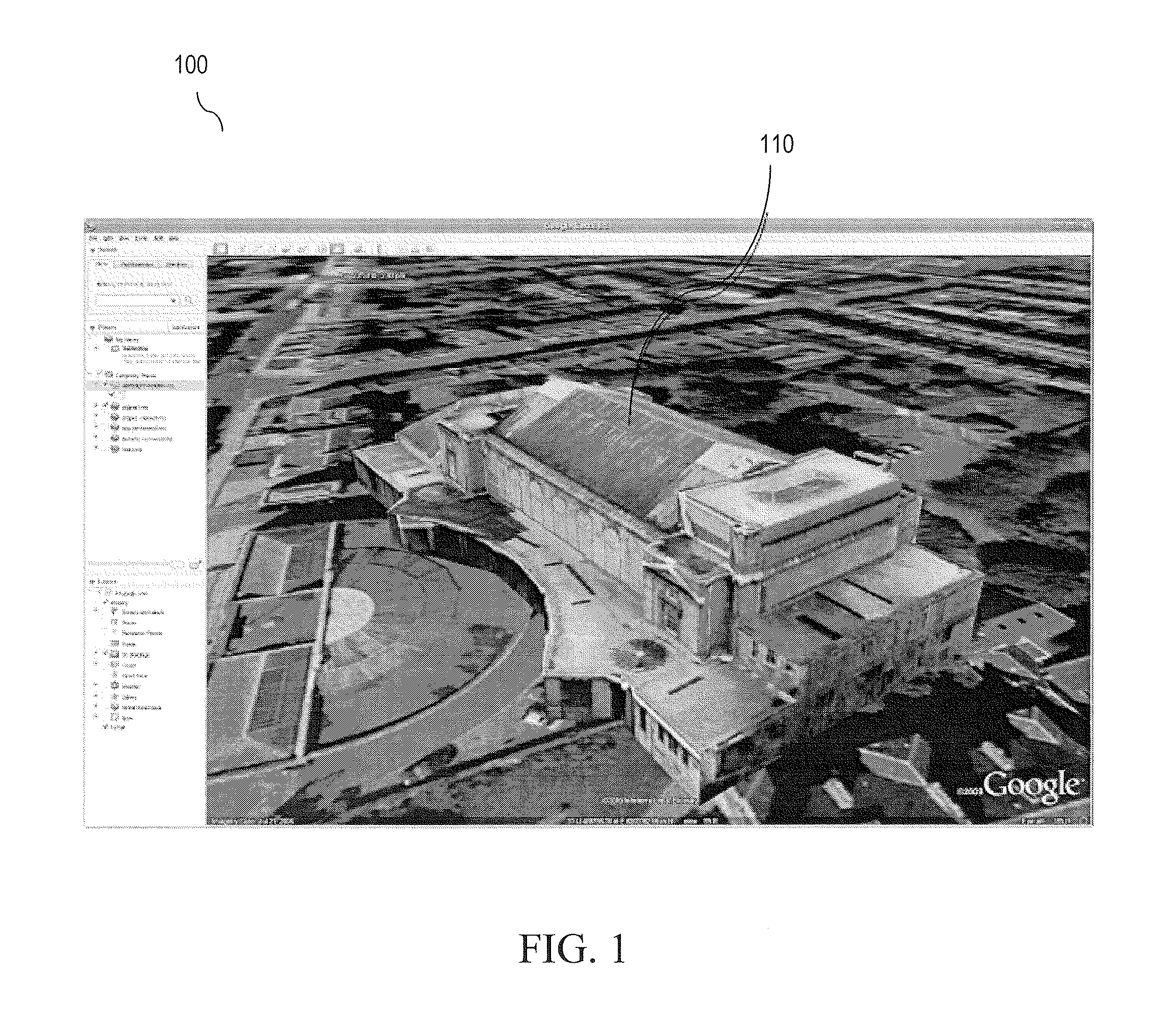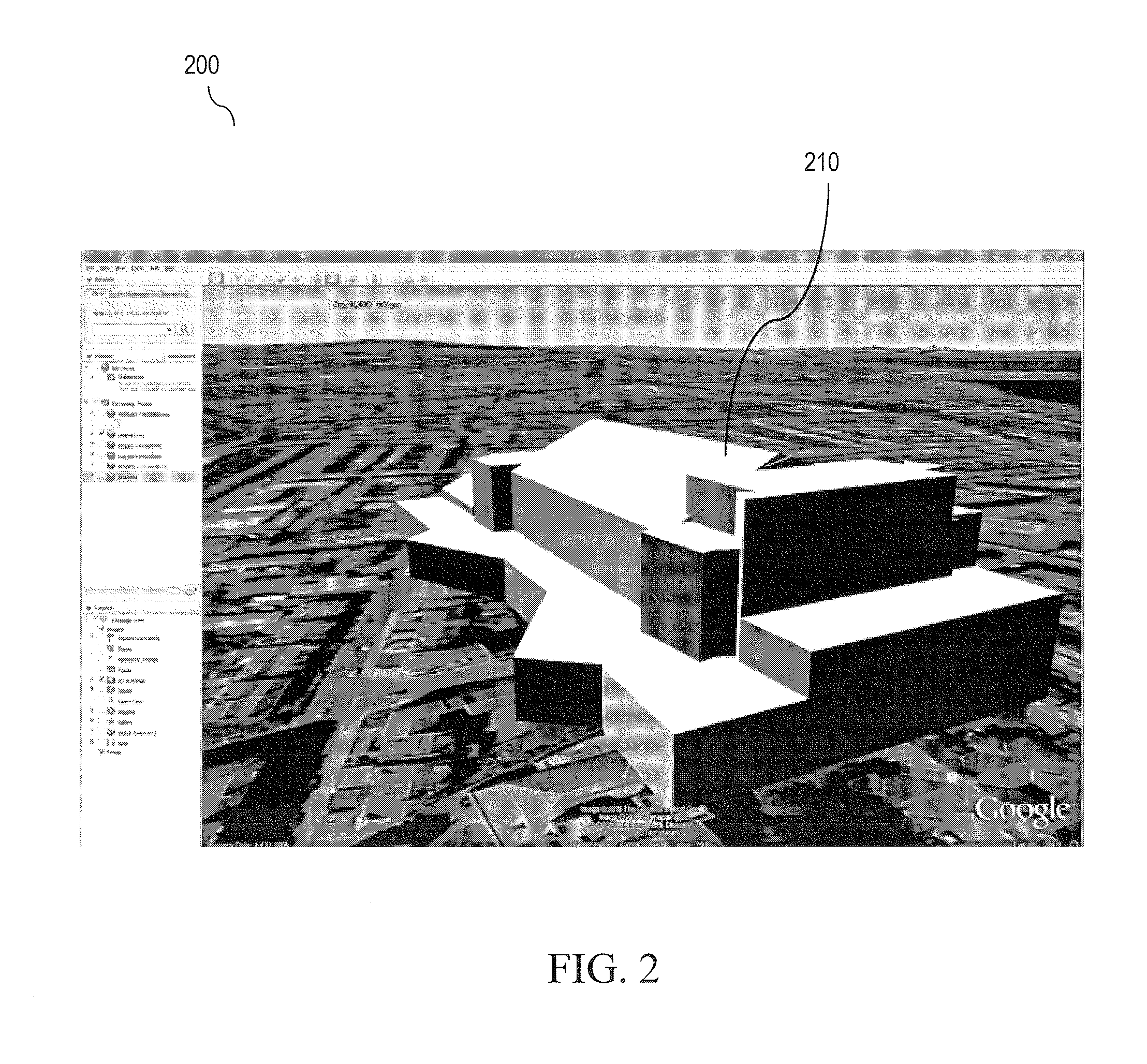Removing hidden faces in 3D building models
a technology of hidden faces and building models, applied in the field of 3d modeling, can solve the problems of excessive polygon surfaces in the 3d, hidden faces from view, and unnecessarily consuming memory, processor and network bandwidth resources
- Summary
- Abstract
- Description
- Claims
- Application Information
AI Technical Summary
Benefits of technology
Problems solved by technology
Method used
Image
Examples
Embodiment Construction
[0020]While the present invention is described herein with reference to illustrative embodiments for particular applications, it should be understood that the invention is not limited thereto. Those skilled in the art with access to the teachings provided herein will recognize additional modifications, applications, and embodiments within the scope thereof and additional fields in which the invention would be of significant utility.
[0021]3D building models may be developed using 3D polygons. These models may be generated by several processes which fit geometric primitives or polygonal shapes to source data. Primitives are the simplest solid objects used for the representation, including boxes, cylinders, prisms, pyramids, spheres and cones. The set of allowable primitives is limited by each software package. In an efficient implementation, these 3D building models should only contain the exterior, visible walls of the buildings and should exclude any polygons underneath or inside of...
PUM
 Login to View More
Login to View More Abstract
Description
Claims
Application Information
 Login to View More
Login to View More - R&D
- Intellectual Property
- Life Sciences
- Materials
- Tech Scout
- Unparalleled Data Quality
- Higher Quality Content
- 60% Fewer Hallucinations
Browse by: Latest US Patents, China's latest patents, Technical Efficacy Thesaurus, Application Domain, Technology Topic, Popular Technical Reports.
© 2025 PatSnap. All rights reserved.Legal|Privacy policy|Modern Slavery Act Transparency Statement|Sitemap|About US| Contact US: help@patsnap.com



